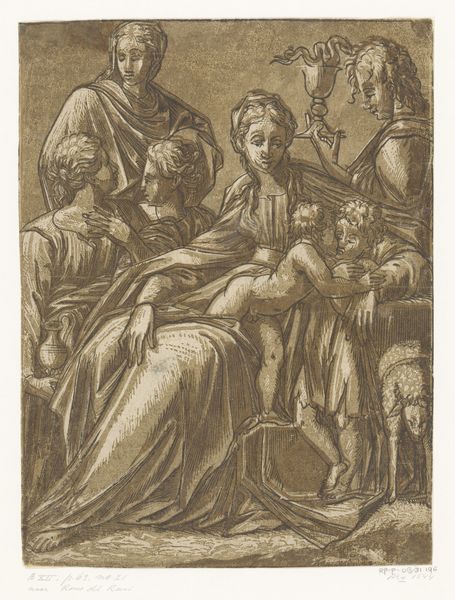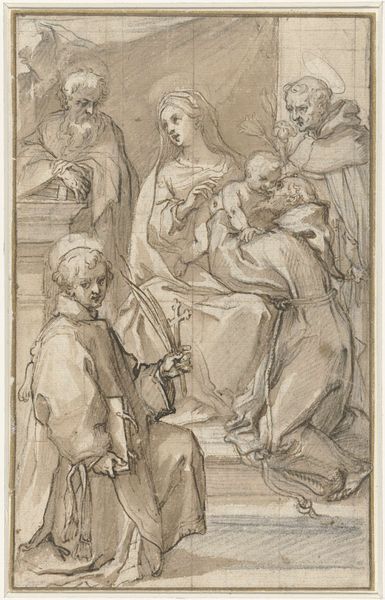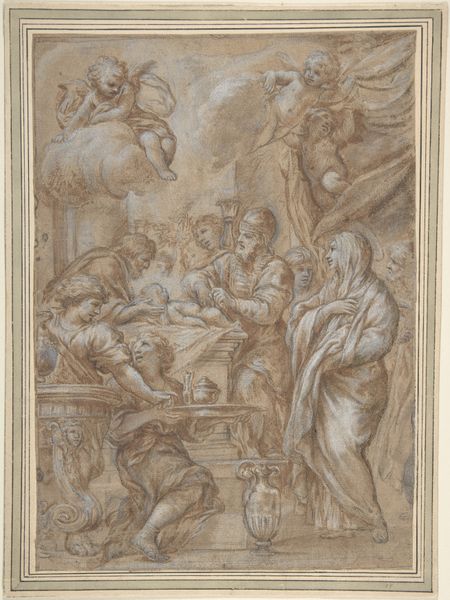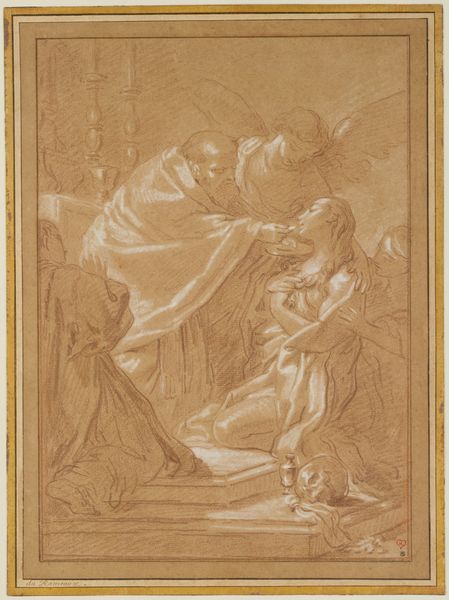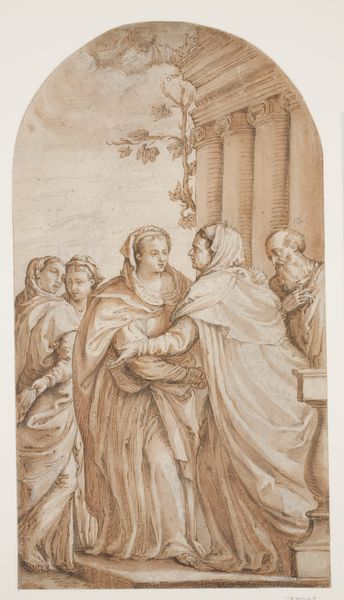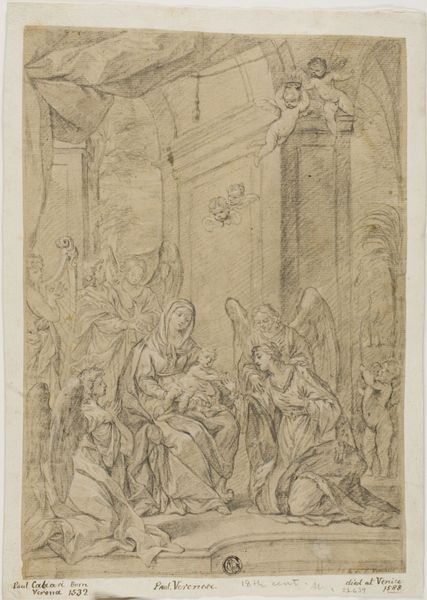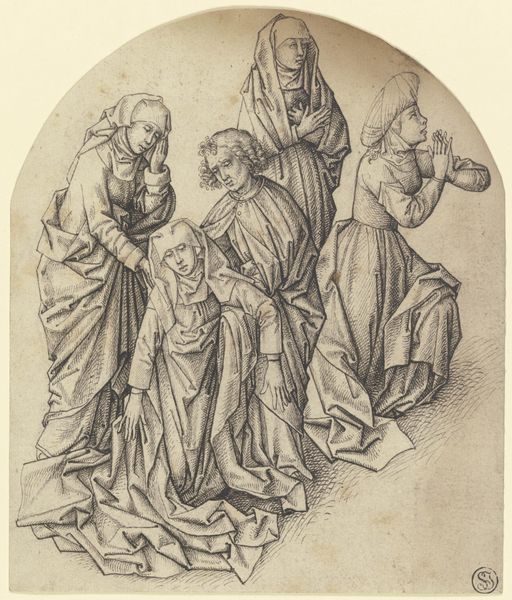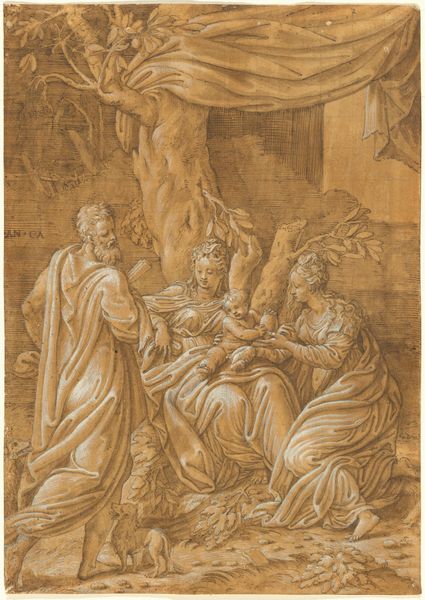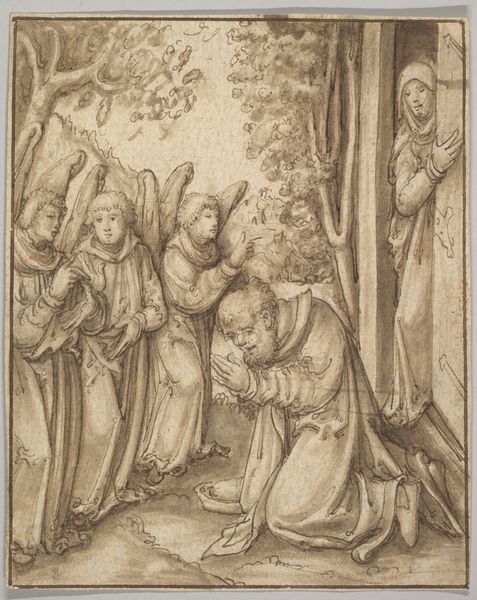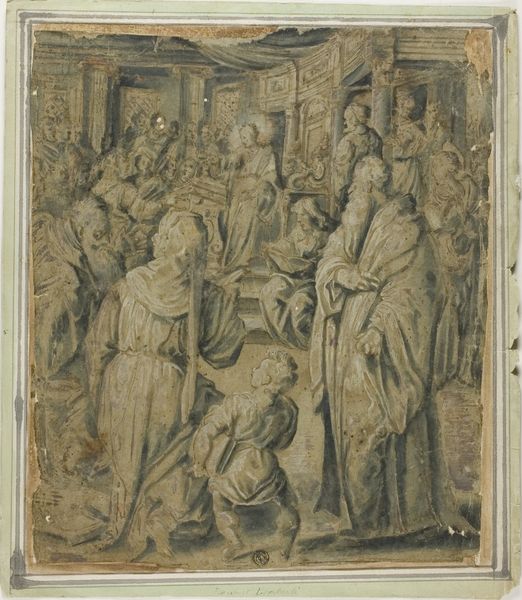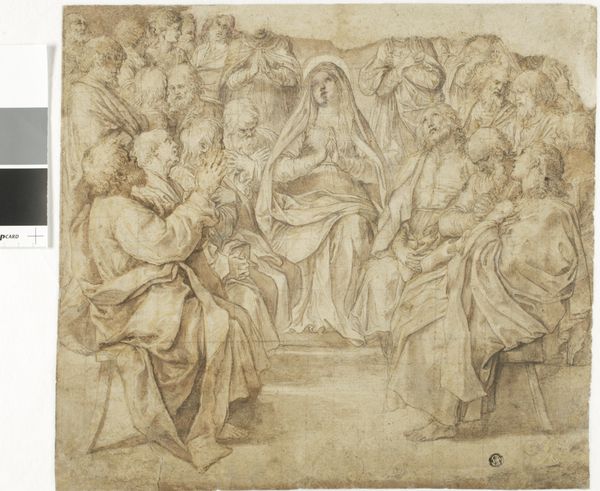
The Virgin and Child with Saint Roch and Two Other Male Saints 1512 - 1583
0:00
0:00
drawing, print, pen, charcoal
#
portrait
#
drawing
# print
#
charcoal drawing
#
figuration
#
11_renaissance
#
oil painting
#
pen
#
charcoal
#
history-painting
#
italian-renaissance
Dimensions: 13 3/8 x 9 1/8in. (33.9 x 23.1cm)
Copyright: Public Domain
Editor: Here we have Bernardino Lanino's "The Virgin and Child with Saint Roch and Two Other Male Saints," created sometime between 1512 and 1583. It looks like a charcoal drawing, and there's something quite somber about it, even with the tenderness of the Madonna. How would you interpret the social context of a piece like this? Curator: It’s important to consider where and for whom this drawing was produced. Milan, during Lanino’s time, was under periods of both French and Spanish control. Images of the Virgin, often linked to civic identity and protection, were particularly significant. Saint Roch, known as a protector against plague, also suggests a society grappling with disease. What does the inclusion of these figures communicate about the artwork's purpose within its community? Editor: So, the drawing perhaps served a dual purpose, offering spiritual comfort and asserting a sense of collective identity amid instability? The presence of Saint Roch particularly speaks to a time of vulnerability and reliance on divine intervention against disease. Curator: Exactly. And think about the intended audience. Was this a preparatory drawing for a larger altarpiece intended for public display, or something for a private devotional setting? These factors significantly alter our understanding of its socio-political function. Does its current location, the Metropolitan Museum, further shift its meaning? Editor: Absolutely. Being in a museum distances us from the immediate concerns of its original audience but allows us to study its craftsmanship and its role within art history. It transforms from a devotional object to a cultural artifact. I hadn't thought about all these shifting layers before. Curator: The drawing also provides insight into workshop practices and artistic training during the Renaissance. The level of detail and precision suggests a focus on mastering anatomical accuracy and conveying emotional depth, elements highly valued in Renaissance art academies and workshops. Editor: It’s fascinating how much social and historical information can be gleaned from just one drawing, transforming our appreciation beyond the purely aesthetic. Curator: Indeed. By considering these contexts, we gain a more profound understanding of the artwork's enduring resonance.
Comments
No comments
Be the first to comment and join the conversation on the ultimate creative platform.
